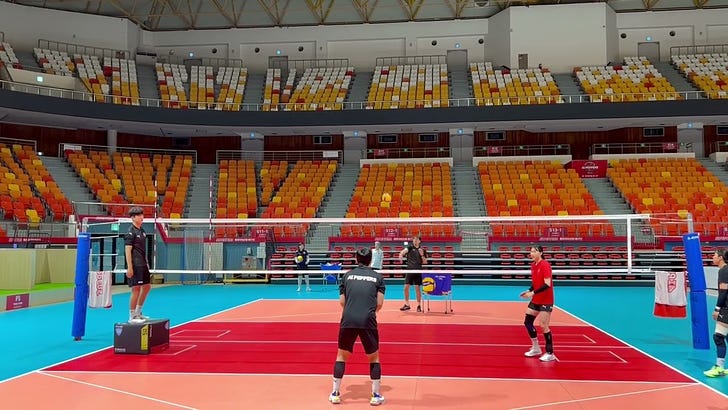Last week I talked about using the Antenna Window to guide setters and hitters in drills such as 2-Way Hitting.
Set To My Window
This spring I’m doing 3 different running article series. On Tuesday, I’m releasing articles aimed at giving you a small, specific tool to make your in-practice or in-match coaching more effective. On Fridays, I’m writing about ways to increase the physical capability of players. On Sundays, I’m releasing a more statistically-oriented beach article.
I showed the first variation I go to, which is also the most common variation that I use over and over again with teams, especially high school aged teams. That variation is to spike line through the window. The reasons this is the bread-and-butter are:
Most hitters can’t hit line well.
Most hitters can’t rotate to hit line at all.
If you have to pass-and-hit, certain situations are going to make it really difficult for the average hitter to get enough heat on the ball to score cross-court.
If the opposing blockers and defenders don’t respect your line shot, you get much easier to defend.
If you can hit line, you can probably hit cross, so setters can find the ideal location by setting “to the window” where a hitter can hit line. If you can do that consistently, a hitter can usually change their relationship to the ball and hit cross-court pretty easily, when it’s needed.
But, just because this is the most common usage of a drill doesn’t mean it’s the only variation you’ll use. Another one I like is to keep the same window but hit cross-court outside the window. Something like this:
The antenna window here is useful because you setters needs to hit the window without setting too tight and your hitters need to maintain a good relationship to the ball. Otherwise, stuff like this happens:
This ball is set too tight and the hitter is far away from the ball and those two factors combined mean that she just cannot get this ball outside that second antenna.
(Note: This is why I typically like the velcro antennas as my extra antennas. Yes, velcro wears out faster but they don’t explode like this when hit hard.)
You might also notice a floor-taped square on the court. That’s a different way to represent the hitting window. Here’s how I use the floor tape window.
Keep reading with a 7-day free trial
Subscribe to Smarter Volley by Joe Trinsey to keep reading this post and get 7 days of free access to the full post archives.





